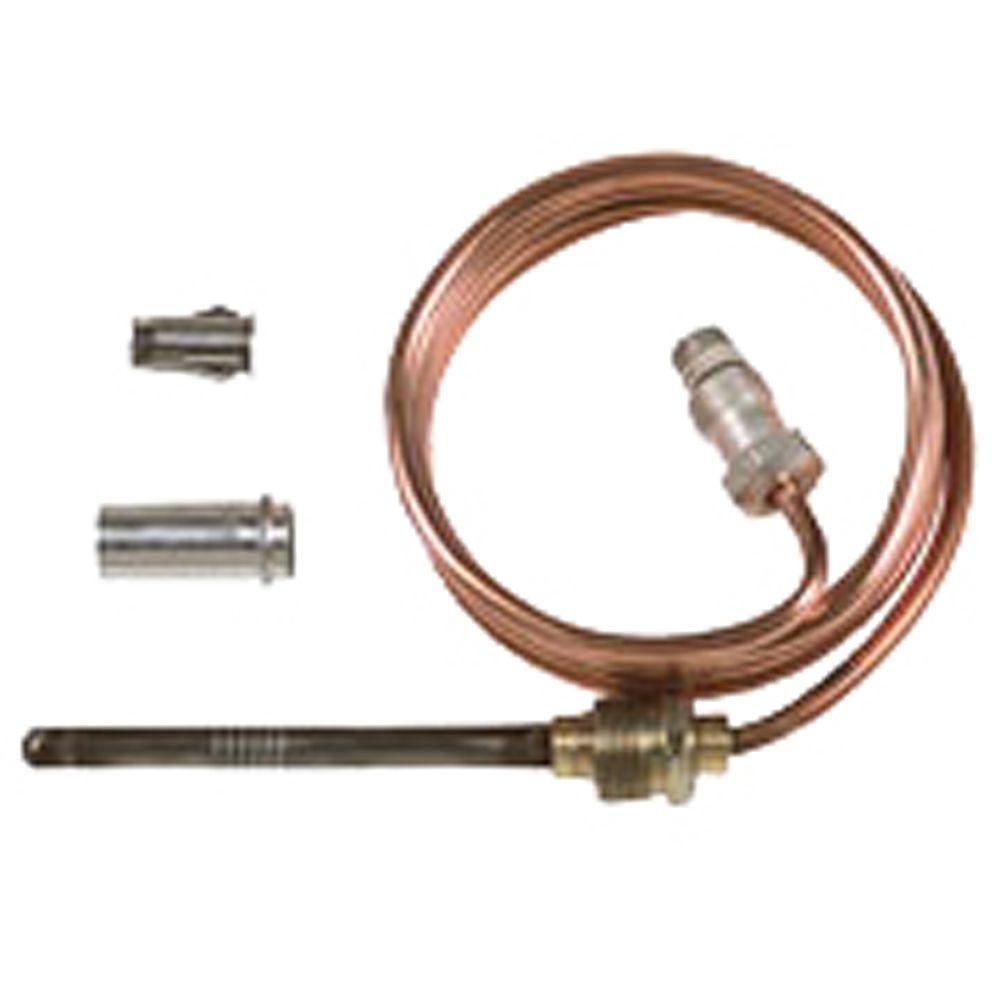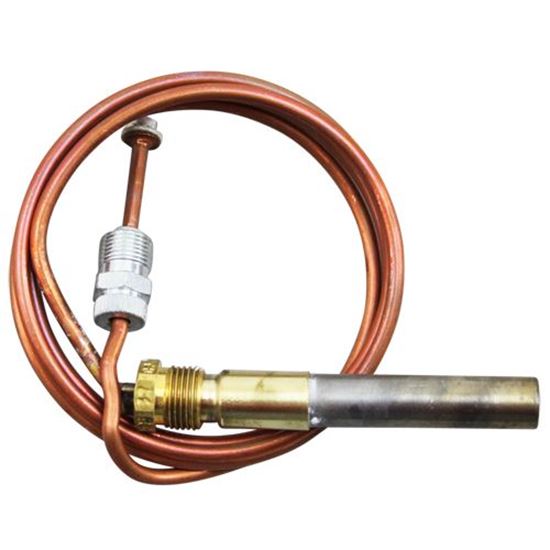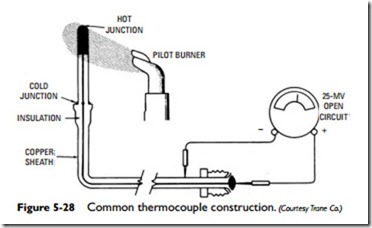-
ectofix wrote:
I’m so pleased to have an actual technician asking for help here instead of the usual cra…uh – stuff.
Lol, I hear you.
-
Makes total sense.
There is a sharp-ish turn for the probe in the flame when it turns up to its mounting bracket, I don’t know where the old one failed, I still have it and perhaps I can figure something out with it.
I guess the difference with flame rectification is that it’s in essence grounding a signal voltage generated from something else whereas the thermocouple is generating its own “signal voltage” by the 2 dissimilar metals rubbing together and being in contact with eachother.
It’s interesting how all this stuff came to be.
-
For the sake of your learning, here’s the link to another problem you had back in July:
Your issue back THEN was with a full-fledged millivolt system in a fryer. A thermocouple circuit is simply a greatly simplified version of a millivolt system. The differences?
A thermocouple –
– Is comprised of a single hot junction.
– Has a standard no-load output of 30mV.
– Always uses a coaxial-type connection (screw-in.)
– Always used to power just a pilot safety valve (PSV), such as a TS11 or BASO.
A thermopile (TP) –
– Is comprised of twenty-six junctions in series (30mV x 26 = 780mV).
– Has a standard no-load output of 750-780mV.
– Uses a coaxial-type connection similar to a thermocouple, but intentionally sized differently.
– Used with a combination valve and often (but not always) serves as the only power source to operate the pilot AND main valves – while generally employed to do so through control components such as a thermostat and a high-limit. Beings that there’s more circuitry, a thermopile generates more voltage to “punch” through the additional components and the multiple connections required.
Another rendition of a thermopile is called a pilot generator (PG), sometimes referred to as a power pile (PP). However, it’s commonly referred to as a thermopile as well –
– A PG works the same way as thermopile. The primary difference is a PG (PP) has two lug connectors instead of a coaxial connector.
– The one pictured <<<there is an armored style PG (PP), designed specifically for higher temperature applications…such as in pizza deck ovens.
FYI: The two dissimilar metal in a thermopile DO NOT rub together. They simply work due to properly applied heat to the HOT junction (immersed in the pilot flame) and the resultant difference in temperature between the HOT junction and the COLD junction. That difference in temperature generates a current flow.
Just to clarify, the COLD junction isn’t actually a junction at all. That term just refers to where voltage output can be derived due to the difference in temperature between the two points.
The operation of a thermocouple (or thermopile) is dependent on the quality of the pilot flame, so it’s important to address flame quality issues during your troubleshooting.

Like fixbear said, the only proper way to test a thermocouple (or thermopile) is with a DC voltmeter. Additionally, testing of each should generally be under a load. I say that because they can often still be capable of producing an output, but have gotten weak over time. Although, as an initial assessment – you can certainly go ahead and test them with NO LOAD. I’ve done that too – and found a few that had outright FAILED to produce ANY output.
One final note:
When dealing with systems using electronic flame controls with a flame sensing electrode, you can certainly buy some time by simply polishing the flame sensor rod. These systems operate from “flame rectification”. For thermocouples (and thermopiles)…it’s not the same. THOSE two components DO NOT function due to the theory of flame rectification. They function simply by a flame impinging on the tip so the device came generate its OWN voltage.Those two systems aren’t even REMOTELY similar.
-
As ectofix say’s thermocouple voltages have dropped over the years from the originals. That’s because they now use (chromel-alumel) bonds instead of the old copper-iron. Also why they are more reliable. The real trick is the heat conductive compound has to also be a electrical insulator. Total opposites.
On a side, there are a lot of thermopiles around you every day. Your doctors IR thermometor is one.
-
Wow, well that makes a whole lot of sense. Thank you for going through the efforts of posting all that and explaining it to me. My downfall is on some of the original stuff as I wasn’t around during that time and I am limited to working on mostly the same stuff repetitively, but i am planning on attending a gas and electronic ignition controls class here a month or 2 from now which should be very awesome and hopefully help me understand all the other stuff that’s out there as well.
When I saw this thermocouple I honestly thought it was a capillary tube with gas in it and it was some sort of safety for the thermostat or something of the sort.
Thank you for helping me with this problem.
-
Haha, I think its great how between the 2 of you, there’s nothing unsolved in the kitchen.
Thank you as well for helping me fix this, I also appreciate the learning, I hate fixing something without knowing how it works.
-
olivero wrote:
I find it very awesome how you guys take these types of conversations and escalate them to NASA technical status.
Now that you’ve learned to master the challenges of thermocouples and thermopiles, let’s step it UP a level. Here’s an intro video:
Log in to reply.




